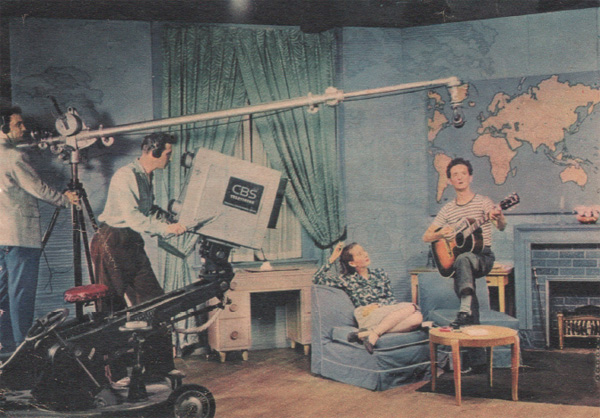“Battle Over Television” – Mechanix Illustrated, 1945

Thanks to Barry Mitchell, here’s some glimpses into how the future of television looked in January 1945. These excerpts from Mechanix Illustrated are interesting in several ways, not only for their photographic coverage of early television equipment and production techniques, and not only for their descriptions of early television equipment, but they are also a snapshot of the rivalry between RCA and CBS over different technical approaches to television.
The main article, by RCA spokesman Jack O’Brine, tells of RCA being “the recognized leader in television” and of the millions it has spent in the field. “Television has become an electronic art and practical possibility largely through the development in RCA laboratories of the Iconoscope and Kinescope,” O’Brine writes.
In a rebuttal, CBS vice-president J.H. Ream throws cold water on O’Brine’s claims and argues that RCA’s plans to jump in the postwar television market using prewar standards, “though understandable, is short-sighted” and will leave viewers unhappy. Ream advocates for using a higher-frequency band in the radio spectrum that would not only broadcast a 735-line picture (versus RCA’s 525-line system) but make color broadcasting easier.
We can also see the first shots of the “color war” in this piece. A picture of the experimental CBS color camera is featured, as well as a diagram of the mechanical color system. The caption notes that RCA has developed a special tube for electronic color broadcasting, and holds that “mechanical color systems are unsatisfactory.”
As a bonus, there’s an artist’s rendering, spread over two color pages, of what a television studio of the future could look like: a circular structure partitioned into four studios, with a turntable stage and a transmitting tower on top.
(One more item: Note on the final page the small piece about Mechanix Illustrated becoming the first science magazine to sponsor a television show when it presented a half-hour program from DuMont’s New York station. Check out as well the picture showing 1944’s idea of what the fashions of 1970 would look like.)
Thanks again to Barry Mitchell for this look into the state of the art from nearly eight decades ago. Enjoy!